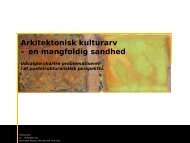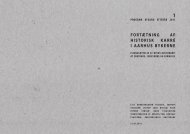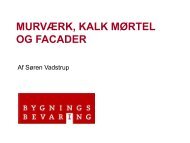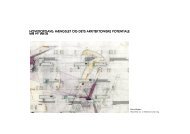TransformaTion TRANSFORMATION - Rum
TransformaTion TRANSFORMATION - Rum
TransformaTion TRANSFORMATION - Rum
Create successful ePaper yourself
Turn your PDF publications into a flip-book with our unique Google optimized e-Paper software.
The artistic element occupies a key position<br />
as a natural, necessary and inescapable part of<br />
the architectural profession, but if the word<br />
“art” comes to be the only desirable term, the<br />
consequences for future restoration assignments<br />
will be far-reaching. The term the art of<br />
restoration has been used by Ove Hidemark in<br />
Stockholm, among others, and in a sense, this<br />
term is as natural as the art of architecture. But<br />
in a sense it also sparks associations with the art<br />
of cooking etc.<br />
Many attribute a certain artistic slant to the<br />
word transformation, and many seem to feel<br />
that it implies a special opportunity to leave a<br />
personal mark on a historic building. As many<br />
have argued, it should be possible to see the<br />
imprint, traces or characteristics of the present<br />
time – at least in the new additions. The latter is<br />
in fact in keeping with, for example, the<br />
requirements of the Venice Charter from 1964 2 .<br />
Presumably, the goal of the language in the<br />
Venice Charter had to do with ethics and<br />
authenticity. The tendency in contemporary<br />
preferences with regard to the use of the term<br />
transformation seems to have more to do with<br />
the urge to apply a more potent approach to the<br />
treatment and alteration of historic buildings.<br />
Compared to the word restoration, the word<br />
transformation has an inherent dynamic;<br />
however, if the etymology 3 of restoration is<br />
examined in Dansk Etymologisk Ordbog, it<br />
reveals a surprising twist. The opening descrip-<br />
tion has a reference: “See I. steer”. Under steer,<br />
one finds a description that eventually, with<br />
references to a ship’s rudder among other<br />
things, points to an understanding related to<br />
steering back to something. In the explanation,<br />
the Latin restaurare, “to bring back to a former<br />
or original state”, is supplemented with the<br />
Latin word instaurare, “to renovate”. Thus,<br />
there is a difference between re- and in-.<br />
In a Danish context, the word instaurering<br />
(instoration) was included in the Danish<br />
encyclopaedia Salmonsens Konversationsleksikon<br />
4 from the early 20th century, but since<br />
then, the word has become obsolete in Danish.<br />
The entry was: “instore (Lat.), re-establish,<br />
renew. Instoration, re-establishment.”<br />
Perhaps an argument could be made to<br />
reintroduce this word, because it points in a<br />
different direction than steering back.<br />
Our architectural heritage will meet challenges<br />
in the future. Concerns for necessary functional<br />
alterations due to a loss of function along with<br />
sustainability requirements will place new<br />
demands on buildings and architects. It will<br />
take highly skilled architects with knowledge<br />
and empathy to manage the values of our<br />
architectural heritage in a way that brings these<br />
values into the future.<br />
That will require well-developed working<br />
methods, and these can be acquired through<br />
education and supplementary training. In the<br />
future, “artistic talent” alone will not suffice.<br />
thought model<br />
foto: lars niColai boCk foto: lars niColai boCk<br />
neues museum, Berlin: et udstrakt hensyn til en historisk bygnings værdier, en la Galerie de Paléontologie, muséum national d’Histoire naturelle, jardin des<br />
forståelse for dens identitet og autentiske tilstand kan være den nødvendige Plantes, Paris: Her har tiden stået stille. absolut intet er blevet transformeret<br />
baggrund for styringen af de mange forskellige tilgange til fagområdet<br />
af en arkitekt. Kun små naturlige ændringer i materialernes overflader afslører<br />
restaurering, der synes at være i dette projekt. Her kan stort set alt iagttages, tidens gang. Ikke engang de med blæk håndskrevne forklaringer ved de<br />
fra rekonstruktion, over skabende nyfortolkning til tydelig addition. Samlet set udstillede genstande er ændret siden 1898.<br />
kan man sige, at bygningen har undergået en transformation.<br />
La Galerie de Paléontologie, muséum national d’Histoire naturelle, jardin des<br />
Neues museum, berlin: A deep consideration for the qualities of a historic Plantes, Paris: Here time has stood still. Nothing whatsoever has been trans-<br />
building, an appreciation of its identity and authentic state may serve as<br />
formed by an architect. only small natural changes in the material surfaces<br />
the necessary background for managing the many different approaches to bear testament to the passing of time. Not even the with ink handwritten<br />
the field of restoration, which this project seems to comprise. Almost every<br />
approach is represented, from reconstruction via creative reinterpretation<br />
to obvious addition. All in all, the building may be said to have undergone a<br />
transformation.<br />
explanations for the exhibits have been changed since 1898.<br />
Specialised knowledge and skill will also be<br />
required to meet this responsibility.<br />
According to the Austrian art historian Alois<br />
Riegl 5 , all cultural objects will eventually<br />
disappear. Some objects disappear at a fast<br />
pace, while others disappear more slowly. What<br />
we can do is to slow down the process of<br />
disappearance. The word transformation can<br />
serve as a suitable term for the process of<br />
change that cultural objects undergo, more or<br />
less naturally or with human assistance, before<br />
they perish.<br />
To me, Riegl’s mindset clearly demonstrates<br />
the necessity and indispensability of architects<br />
who have the skills to understand the traces and<br />
periods of a historic building and to use this<br />
understanding to articulate a professionally<br />
motivated value set as the basis for an architectural<br />
intervention.<br />
Lars Nicolai Bock is an architect MAA and<br />
associate professor at the Aarhus School of<br />
Architecture.<br />
arkitektur dk 3 2011 7



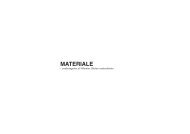
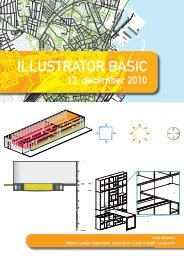
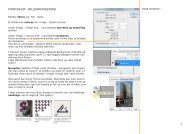
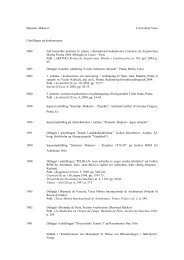
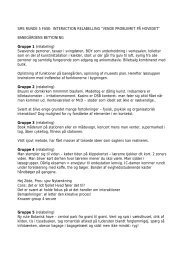
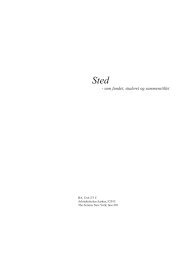
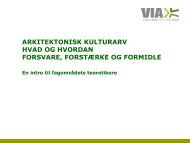
![KONKURRENCE [KÅRK] - Rum - Arkitektskolen Aarhus](https://img.yumpu.com/18524393/1/184x260/konkurrence-kark-rum-arkitektskolen-aarhus.jpg?quality=85)


